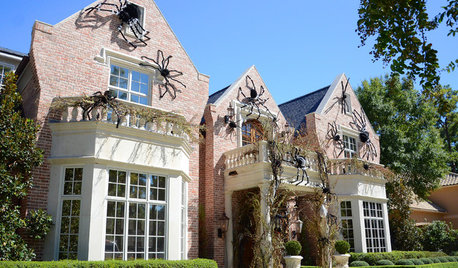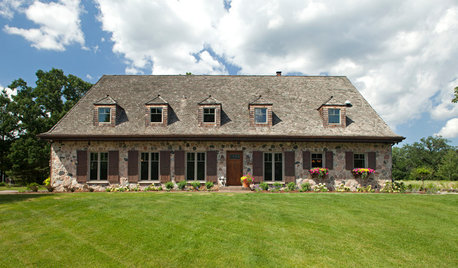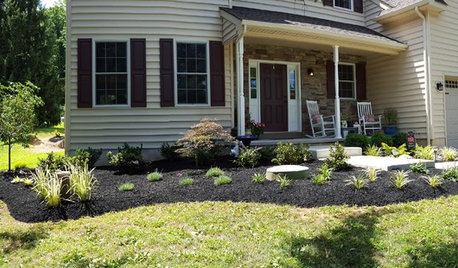13 lightning rods on the roof of my house?! Guy says every 20'
threeapples
12 years ago
Related Stories

FUN HOUZZSurvey Says: We’re Scared of Being Home Alone — and Spiders
A new Houzz survey reveals that most of us get spooked in an empty house. Find out what’s causing the heebie-jeebies
Full Story
MOVINGWhat Those Home-Sale Disclosures Are Really Saying
Avoid costly surprises by knowing what’s included in a home seller’s disclosure, what’s not and what you can do if you suspect foul play
Full Story
REMODELING GUIDESOne Guy Found a $175,000 Comic in His Wall. What Has Your Home Hidden?
Have you found a treasure, large or small, when remodeling your house? We want to see it!
Full Story
BASEMENTSHouzz TV: This Guy’s Giant Lego Collection Proves Everything Is Awesome
You may have seen our story about this architect’s Lego-filled basement. Now watch the video to see just how he organizes all 250,000 pieces
Full Story
LIFEIf You Could Talk to Your House, What Would You Say?
‘Pull yourself together’ or ‘thank you for transforming my life’? Notes to homes around the country hit us where we live
Full Story
LANDSCAPE DESIGNCalifornia Says Goodbye to the Sprawling Ornamental Lawn
New state rules will effectively limit turfgrass to 25 percent of the landscape in most new and renovated yards
Full Story
DECORATING GUIDES16 Little Indulgences to Enhance Your Every Day
You don’t have to go to great lengths or expense to make your home feel sumptuous and yourself feel special
Full Story
FURNITUREHouzz Flip: 50 Comfy Chairs Every Dad Will Want to Sit In
Relax into Father’s Day with this collection of inviting recliners and lounge chairs
Full Story
FUN HOUZZGuessing Game: What Might Our Living Rooms Say About Us?
Take a shot on your own or go straight to just-for-fun speculations about whose homes these could be
Full Story
MOST POPULARSo You Say: 30 Design Mistakes You Should Never Make
Drop the paint can, step away from the brick and read this remodeling advice from people who’ve been there
Full StoryMore Discussions








brickeyee
bevangel_i_h8_h0uzz
Related Professionals
Brushy Creek Architects & Building Designers · Fayetteville Architects & Building Designers · Henderson Architects & Building Designers · Yeadon Architects & Building Designers · Bell Design-Build Firms · Hainesport Home Builders · Lewisville Home Builders · Bay Shore General Contractors · Chillicothe General Contractors · Cottage Grove General Contractors · Lincoln General Contractors · Milford Mill General Contractors · Overlea General Contractors · Roseburg General Contractors · Winton General Contractorsstinkytiger
threeapplesOriginal Author
brickeyee
threeapplesOriginal Author
prairiemom61
stinkytiger
brickeyee
stinkytiger
brickeyee